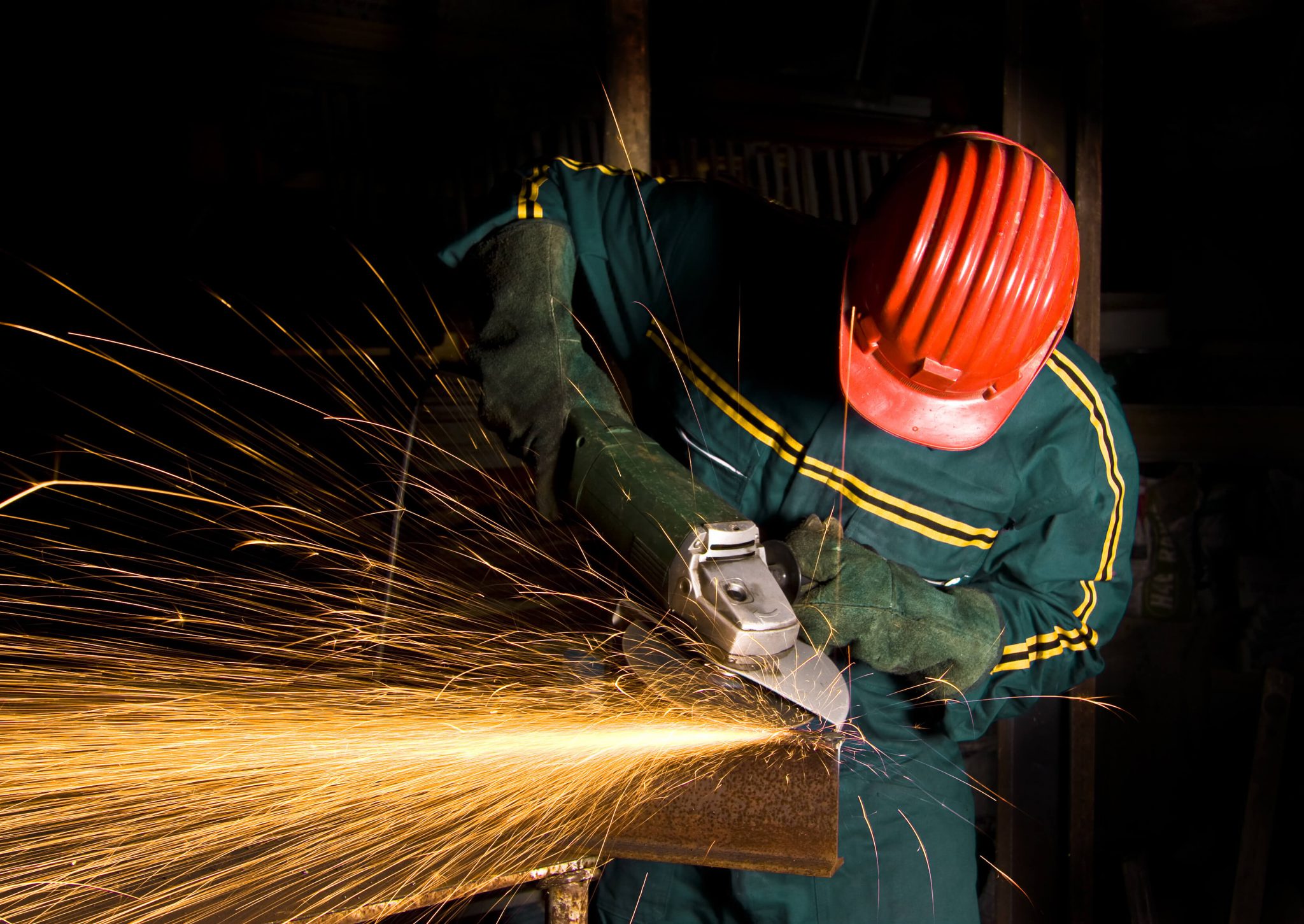Knowing the type of material our users are working with is utmost importance to find the right abrasives to gain optimum efficiency. In this article, we look closely at the classification of stainless steel.
Classifications of Stainless Steel
Stainless steels are commonly divided into five groups, depending on the specific amounts of alloying elements, which control the microstructure of the alloy.
Austenitic
Austenitic stainless steels are the most weldable of the stainlesses and can be divided rather loosely into three groups: common chromium-nickel (300 series), manganese-chromium-nickel-nitrogen (200 series) and specialty alloys. Austenitic is the most popular stainless steel group and is used for numerous industrial and consumer applications, such as in chemical plants, power plants, food processing and dairy equipment. Austenitic stainless steels have a face-centered cubic structure. Though generally very weldable, some grades can be prone to sensitization of the weld heat-affected zone and weld metal hot cracking.
Ferritic
Ferritic stainless steel consists of iron-chromium alloys with body-centered cubic crystal structures. They can have good ductility and formability, but high-temperature strengths are relatively poor when compared to austenitic grades. Some ferritic stainlesses (such as types 409 and 405) used, for example, in mufflers, exhaust systems, kitchen counters and sinks, cost less than other stainless steels. Other more highly alloyed steels low in C and N (such as types 444 and 261) are more costly, but are highly resistant to chlorides.
Martensitic
Martensitic stainless steels, such as types 403, 410, 410NiMo and 420, are similar in composition to the ferrite group, but contain a balance of C and Ni vs. Cr and Mo; hence, austenite at high temperatures transforms to martensite at low temperatures. Like ferrite, they also have a body-centered cubic crystal structure in the hardened condition. The carbon content of these hardenable steels affects forming and welding. To obtain useful properties and prevent cracking, the weldable martensitics usually require preheating and postweld heat treatment.
Duplex
Primarily used in chemical plants and piping applications, the duplex stainless steels are developing rapidly today and have a microstructure of approximately equal amounts of ferrite and austenite. Duplex stainless steels typically contain approximately 22-25% chromium and 5% nickel with molybdenum and nitrogen. Although duplex and some austenitics do have similar alloying elements, duplexes have higher yield strength and greater stress corrosion cracking resistance to chloride than austenitic stainless steels.
Precipitation Hardening
Precipitation-hardening stainless steels are chromium-nickel stainlesses, which contain alloying additions such as aluminum, copper or titanium that allow them to be hardened by a solution and aging heat treatment. They can be either austenitic or martensitic in the aged condition. Precipitation- hardening stainless steels are grouped into three types: martensitic, semiaustenitic and austenitic. The martensitic (such as Type 630) and semiaustenitic (such as Type 631) can provide higher strength than the austenitic (such as Type 660, also known as A286).
Selecting Stainless Steel
The selection of a particular type of stainless steel will depend on what requirements a particular application poses. Environment, expected part life and extent of acceptable corrosion all help determine what type of stainless to use. In most cases, the primary factor is corrosion resistance, followed by tarnish and oxidation resistance. Other factors include the ability to withstand pitting, crevice corrosion and intergranular attack. The austenitic/higher chromium stainless steels, usually required in very high or very low temperatures, are generally more corrosion resistant than the lower chromium ferritic or martensitic stainlesses.
Most stainless steels are considered to have good weldability. It is important to make sure joint surfaces and any filler metal be kept free from oxide, organic material or other contamination.
A principal concern in selecting welding filler metals for stainless steels is to match the important properties of the base metal. In addition, for nominally austenitic and duplex stainless steels, one should have some control over the weld metal’s ferrite content. Specification of ferrite in nominally austenitic and duplex stainless steel welds are based upon Ferrite Numbers (FN) defined in the AWS A4.2M/A4.2:1997 standard, Standard Procedures for Calibrating Magnetic Instruments to Measure the Delta Ferrite Content of Austenitic and Duplex Ferritic-Austenitic Stainless Steel Weld Metal. Recommended by the American Society of Mechanical Engineers Code, the magnetically determined FN is much simpler to obtain and is more reproducible than metallographically determined percent ferrite.
When selecting stainless steels, a welder must also consider something called “sensitization.” Ferritic stainless steels and some austenitic stainless steels, which contain appreciable free carbon (greater than about 0.04%C) can be rendered sensitive to intergranular corrosion in the heat-affected zone (HAZ) of a weld. This sensitization occurs where a peak temperature of about 900 to 1600 F (482 to 871 C) is reached in the HAZ. Chromium carbides precipitate on grain boundaries, and in the process of doing so, chromium as an alloy element is depleted in the metal adjacent to the grain boundaries. Then, in corrosive service, this Cr-depleted metal is selectively attacked. Low welding heat input can limit, but not eliminate, sensitization. The best methods of preventing sensitization are selection of very low carbon base metal (less than 0.03%C) or selection of a grade stabilized with titanium or niobium (also known as columbium), such as types 321 or 347. Note also that sensitization is almost never a weld metal problem – it is largely a heat-affected zone problem.
Adapted from: AWS, 2017, https://app.aws.org/wj/1998/11/kotecki/










